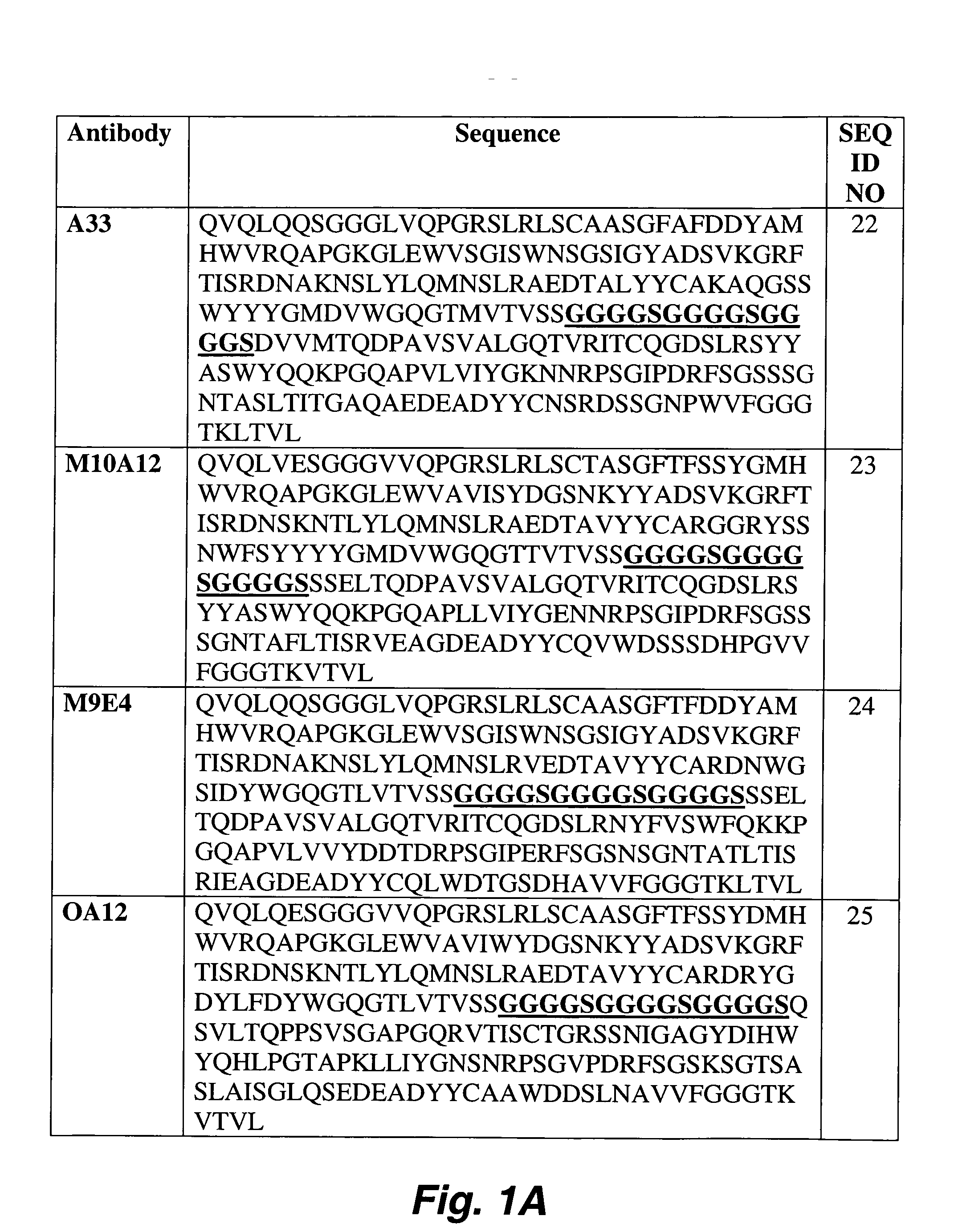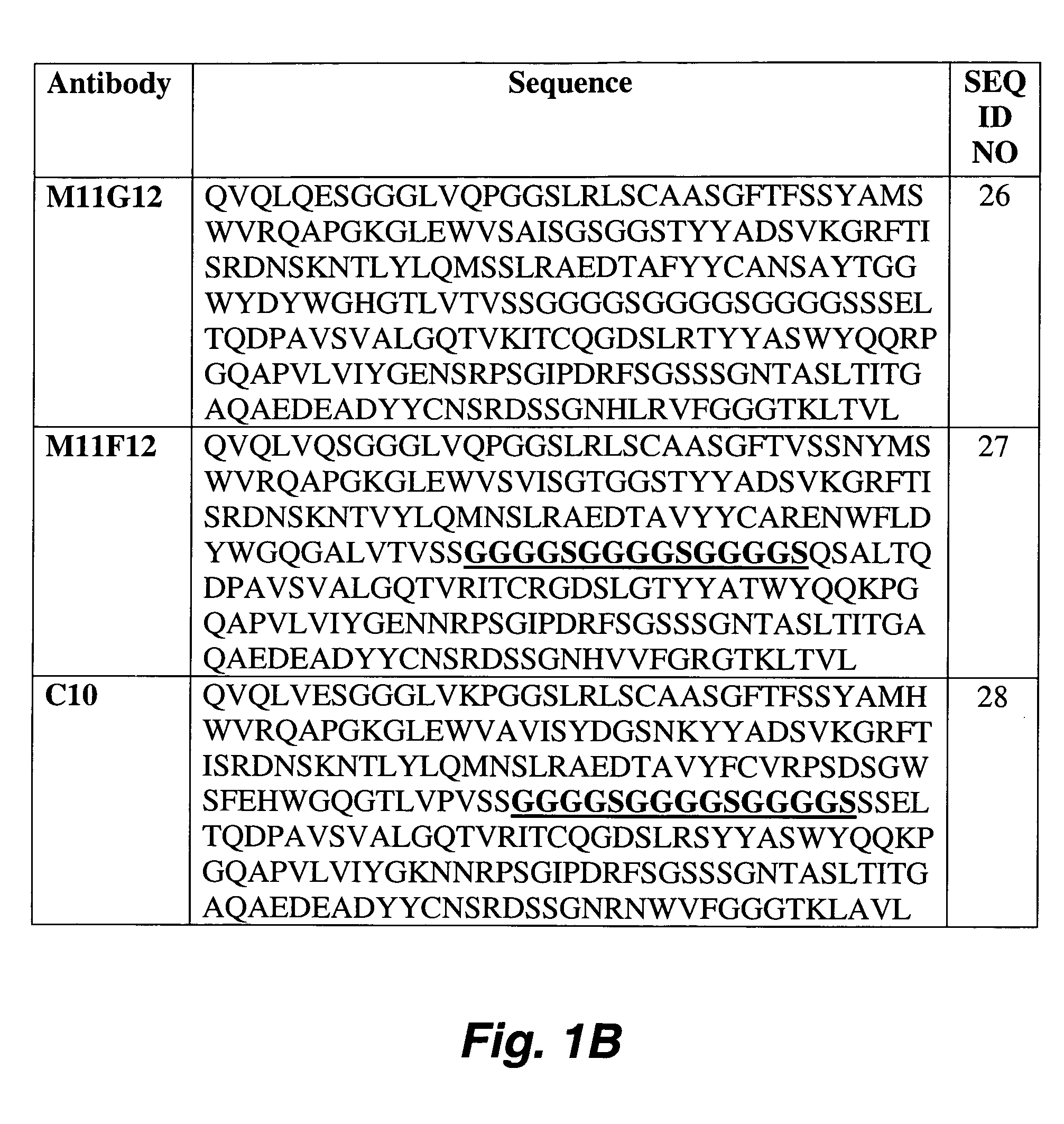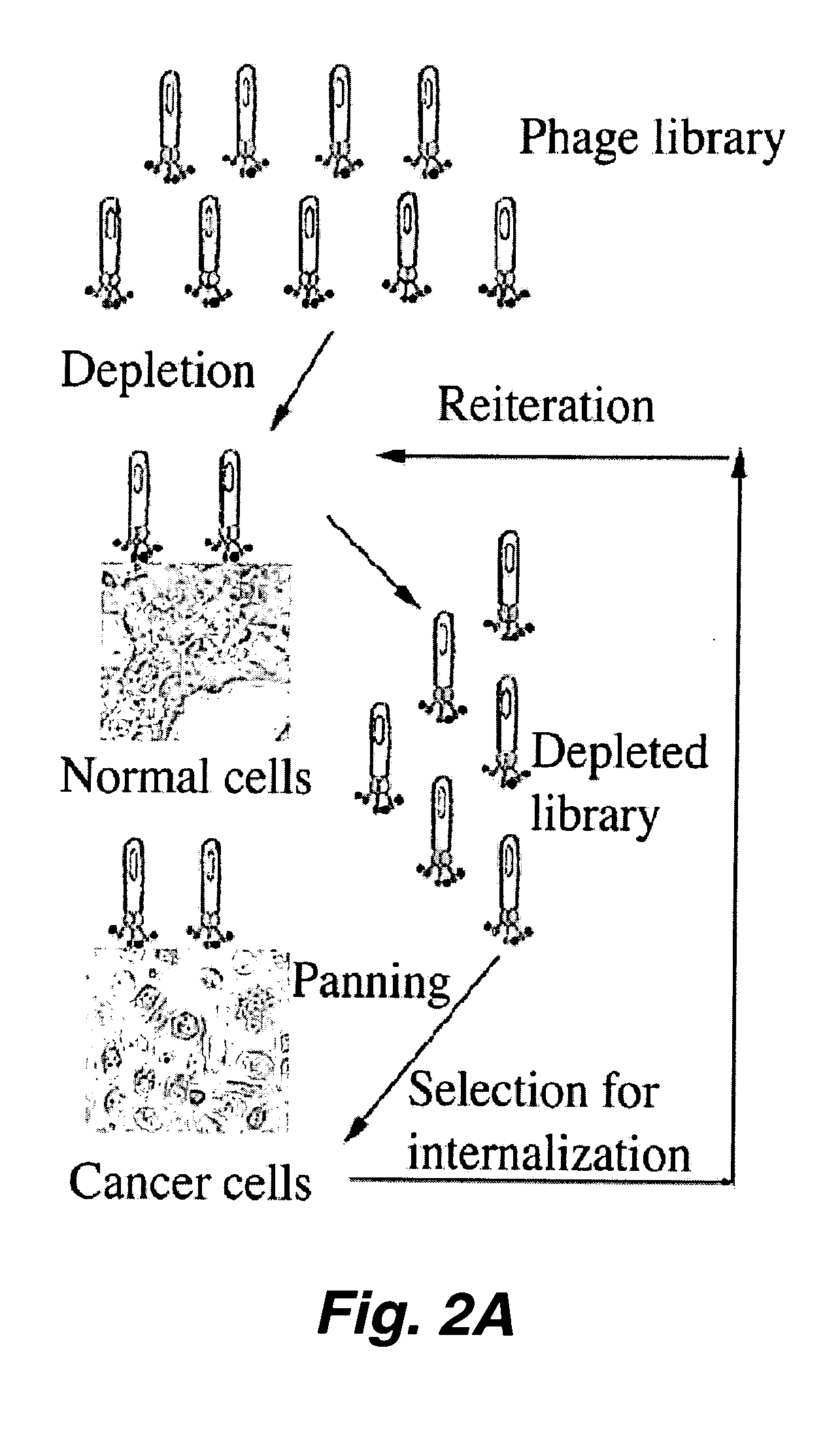Prostate cancer specific internalizing human antibodies
a prostate cancer and human antibody technology, applied in the field of prostate cancer specific internalizing human antibodies, can solve the problems of limited success of direct cell selection in generating tumor targeting mabs, and achieve the effect of increasing stability and half-life of such molecules and facilitating the addition of additional moieties
- Summary
- Abstract
- Description
- Claims
- Application Information
AI Technical Summary
Benefits of technology
Problems solved by technology
Method used
Image
Examples
example 1
Mapping Tumor Epitope Space by Direct Selection of Single Chain Fv Antibody Libraries on Prostate Cancer Cells
[0196] The identification of tumor-specific cell surface antigens is a critical step towards the development of targeted therapeutics for cancer. The epitope space at the tumor cell surface is highly complex, composed of proteins, carbohydrate and other membrane-associated determinants including post-translational modification products, which are difficult to probe by approaches based on gene expression. This epitope space can be efficiently mapped by complementary monoclonal antibodies. By selecting human antibody gene diversity libraries directly on the surface of prostate cancer cells, we have taken a functional approach to identifying fully human tumor-specific monoclonal antibodies without prior knowledge of their target antigens. Selection conditions have been optimized to favor tumor-specific antibody binding and internalization. To date we have discovered over nine...
PUM
| Property | Measurement | Unit |
|---|---|---|
| molecular weight | aaaaa | aaaaa |
| pH | aaaaa | aaaaa |
| pH | aaaaa | aaaaa |
Abstract
Description
Claims
Application Information
 Login to View More
Login to View More - R&D
- Intellectual Property
- Life Sciences
- Materials
- Tech Scout
- Unparalleled Data Quality
- Higher Quality Content
- 60% Fewer Hallucinations
Browse by: Latest US Patents, China's latest patents, Technical Efficacy Thesaurus, Application Domain, Technology Topic, Popular Technical Reports.
© 2025 PatSnap. All rights reserved.Legal|Privacy policy|Modern Slavery Act Transparency Statement|Sitemap|About US| Contact US: help@patsnap.com



